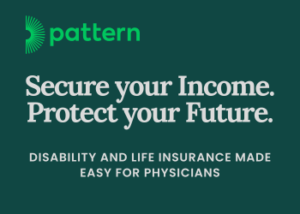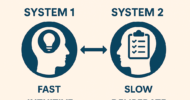The boom in telemedicine is here, and understandably so. The “consumer” is in control now, and they sure don’t want to be “patient” anymore. When Americans want care, they want it cheap, and they want it now. Telemedicine has grown to accommodate 7 million annual patient encounters, up from 350,000 five years ago. What savvy health care administrator doesn’t see numbers like that and get dollar signs in his eyes? Couple telemedicine’s growth with its low overhead, and it is clearly an up-and-coming source of low-cost revenue. Still yet, questions remain. Isn’t “clinician” accuracy negatively affected when only a video evaluation is performed? Can a woefully incomplete set of vital signs identify the patients with emergent pathology? If a patient has symptoms suggestive of a urinary tract infection, can she be prescribed antibiotics without a urinalysis? Can a “clinician” rely on a mother’s abdominal exam in a vomiting child? Health care purists are aghast at this perceived disregard of the traditional doctor-patient encounter.
I’ve talked to physician colleagues about the trend, and 90 percent view it as worrisome, even dangerous. A pediatrician I know told the tale of a 3-year-old patient whose mother came to the office requesting an ENT consultation for tympanostomy tube placement. The child had been diagnosed with three separate ear infections over the last six months. Records of these visits were unavailable, so the doctor probed further. All three had been diagnosed via online “visits,” without ever actually visualizing the ear canal and tympanic membrane via otoscopy. It was impossible to know if any or all of those episodes were truly ear infections. My pediatrician friend did not refer the patient to ENT. Tales of follow-up visits due to misdiagnosed rashes, missing but important vital signs, miserable excuses for abdominal exams performed by a surrogate, patients saying “Aaaah” into the computer camera, and proxy performed Ottawa ankle rules abound. Is the quality of a telemedicine encounter on par with an in-person doctor visit? I don’t know, but allow me to use a comparison experience with which we are all familiar.
I love Thai food. I love lots of food, but Thai food tickles a nerve that no other food can. My favorite Thai restaurant makes this incredible, brothy, spicy chicken pad prikh that I regularly daydream about. I order it virtually every time I go there. When it arrives, steaming and fresh out of the kitchen, the feeling I get upon tucking into it is most aptly compared to the feeling of romantic love. It is that phenomenal to me. Many days, I want that dish, but I don’t have the time, energy, or financial disinhibition to justify going to the restaurant and getting it. Fortunately, there are other options. If I’m at home and already down to my boxer shorts, I’m looking for convenience. I can make a phone call and order the same dish. It gets painlessly sent to my house by a delivery service for a few extra dollars. I get to stay in my boxers, and it shows up an hour later. The problem is, since the food sat in a box for a while, the rice is gummy, the vegetables a bit limp, and the broth is layered out. The pad prikh is still delicious, but it pales in comparison to what I get in person at the restaurant. I sacrificed quality for convenience.
Other days, I am jonesing for that pad prikh, but I am in a hurry. Or maybe I have an hour to kill and am appropriately dressed, but don’t feel like lunch justifies spending 15 bucks. I can go to a clean, quick hibachi grill and get some chicken, rice, and vegetables for a fraction of the cost of my favorite dish at the Thai restaurant. There are a handful of sauces to choose from, no bones in the chicken, and the food gets slung out with dizzying speed. But it isn’t the same as the food at the Thai joint. The zucchini is serviceable, but soggy. The carrots are only slightly above average. The chicken is a little tough, and that heavenly broth is nowhere to be found. It’s good, but not great. At least it didn’t cost much. I sacrificed quality for cost.
Health care consumers (formerly known as patients) consciously or subconsciously use three variables to decide the appropriate venue for their encounter. These variables are quality, convenience, and cost. Ideally, every visit is of high quality, high convenience, and low cost. Somewhat inexplicably, Americans assume quality exists at all access points. Equating telemedicine with a clinic visit is a potentially dangerous assumption, for one’s health is more important than Asian food. Telemedicine sacrifices quality in order to provide a convenient, low-cost option. When your health is on the line, should you be swayed by quality, or cost and convenience? Trust me when I say there is no substitute for some time in the exam room with a doctor who knows you.
Thomas Paine is an emergency physician.
Image credit: Shutterstock.com































![Registered dietitians on your care team [PODCAST]](https://kevinmd.com/wp-content/uploads/Design-4-190x100.jpg)

![Why true listening is crucial for future health care professionals [PODCAST]](https://kevinmd.com/wp-content/uploads/Design-3-190x100.jpg)
